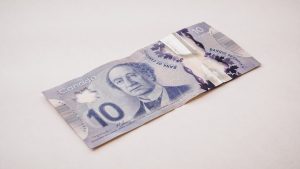Forex charts are a visual representation of the price movement of different currency pairs in the forex market. These charts can be created using various charting software programs or by hand. Drawing forex charts by hand is a valuable skill for traders who want to have a better understanding of price action and market trends. In this article, we will explain how to draw forex charts by hand.
Step 1: Choose a currency pair
The first step in drawing a forex chart by hand is to decide which currency pair you want to analyze. Forex charts typically display the price movement of one currency relative to another. For example, the EUR/USD currency pair shows the price movement of the euro in relation to the US dollar.
Step 2: Identify the time frame
The next step is to determine the time frame for the chart. Forex charts can be displayed in various time frames, such as daily, weekly or monthly. The time frame you choose will depend on your trading strategy and the amount of time you are willing to devote to analyzing the market.
Step 3: Gather data
To draw a forex chart by hand, you will need to gather data on the price movement of the currency pair you have chosen. This data can be obtained from a variety of sources, such as financial news websites, trading platforms or financial newspapers.
Step 4: Draw the X and Y axis
Once you have gathered the data, the next step is to draw the X and Y axis of the chart. The X-axis represents the time period, while the Y-axis represents the price of the currency pair. The X-axis should be labeled with the time intervals you have chosen, such as days or weeks, while the Y-axis should be labeled with the price levels of the currency pair.
Step 5: Plot the data points
After drawing the X and Y axis, you can start plotting the data points on the chart. Each data point represents the closing price of the currency pair for a specific time period. To plot the data points, you can use a pencil or a pen to mark the price level on the Y-axis and the time interval on the X-axis.
Step 6: Connect the data points
Once you have plotted all the data points on the chart, the next step is to connect them with a line. This line represents the price movement of the currency pair over the chosen time frame. The line should be drawn from left to right, starting with the oldest data point and ending with the most recent data point.
Step 7: Add support and resistance levels
Support and resistance levels are important in forex trading as they help traders identify potential entry and exit points. These levels can be added to the chart by drawing horizontal lines at key price levels where the currency pair has previously reversed its direction.
Step 8: Analyze the chart
After completing the chart, the final step is to analyze it to identify potential trading opportunities. Traders can use various technical indicators, such as moving averages, to confirm trends and identify potential buy or sell signals.
Conclusion
Drawing forex charts by hand is a valuable skill for traders who want to have a better understanding of price action and market trends. By following the steps outlined in this article, traders can create their own forex charts and use them to analyze the market and identify potential trading opportunities. While drawing forex charts by hand requires more time and effort compared to using charting software programs, it can provide traders with a deeper understanding of the market and help them develop their trading skills.





